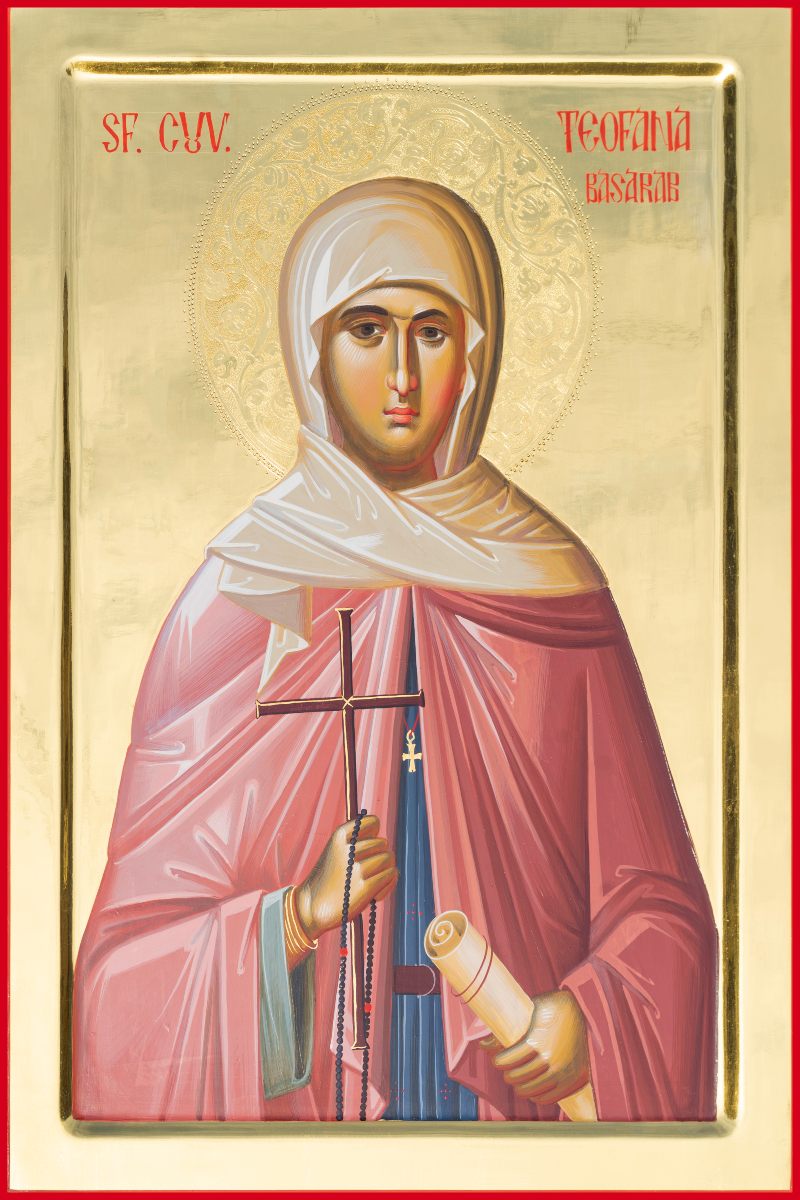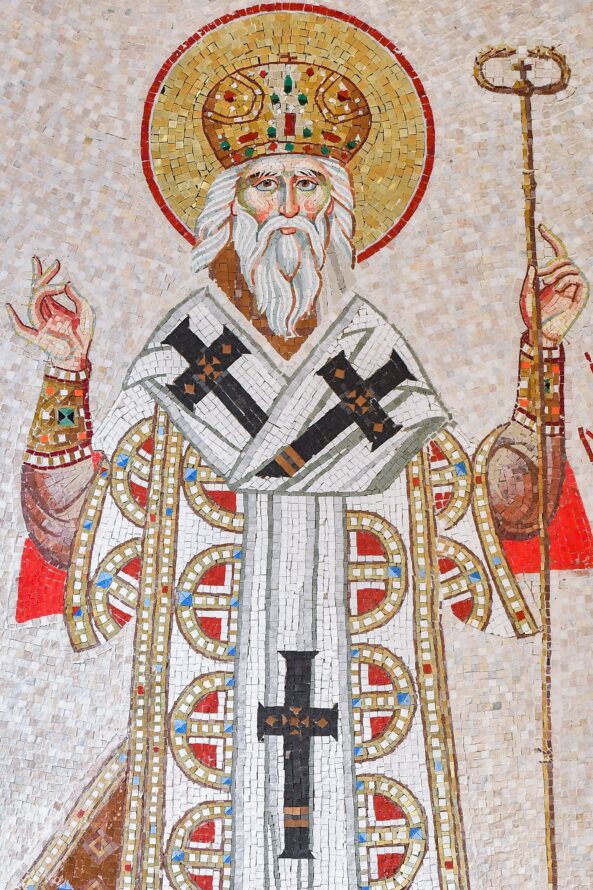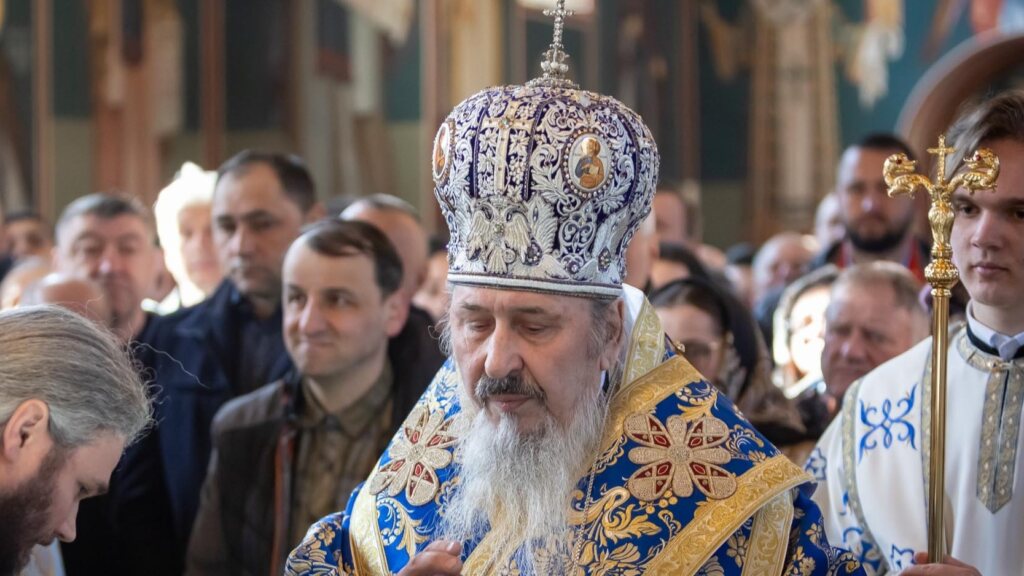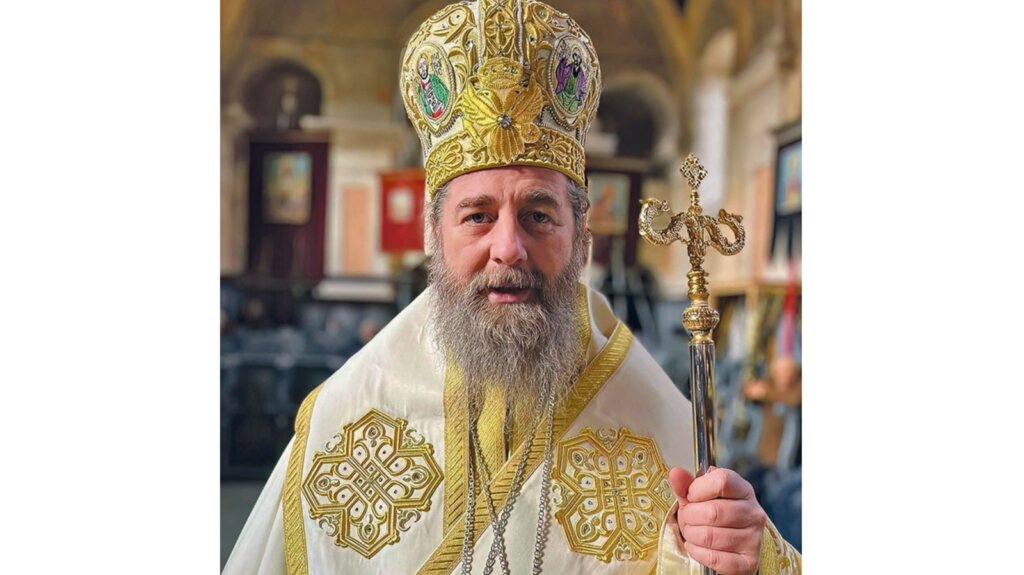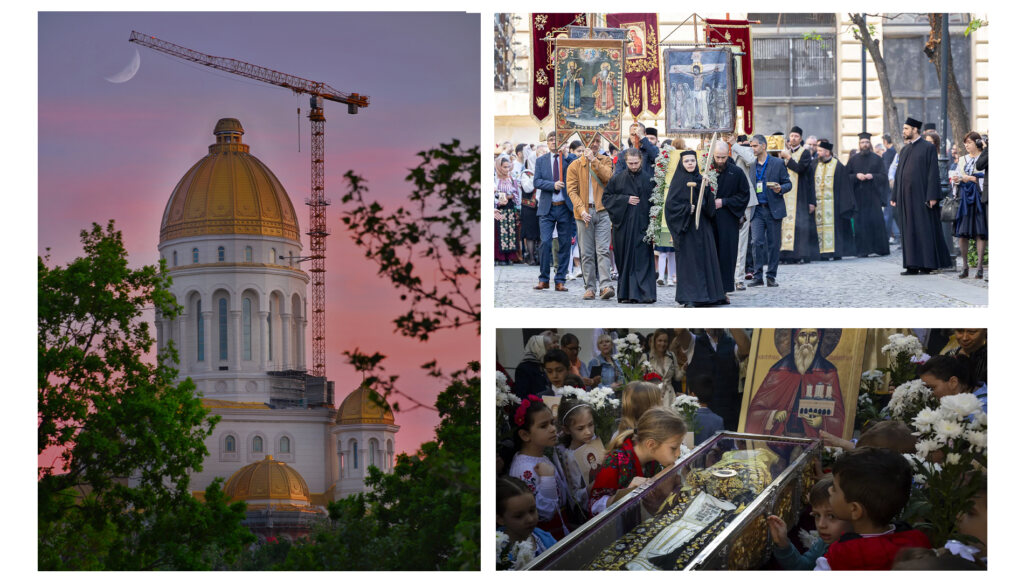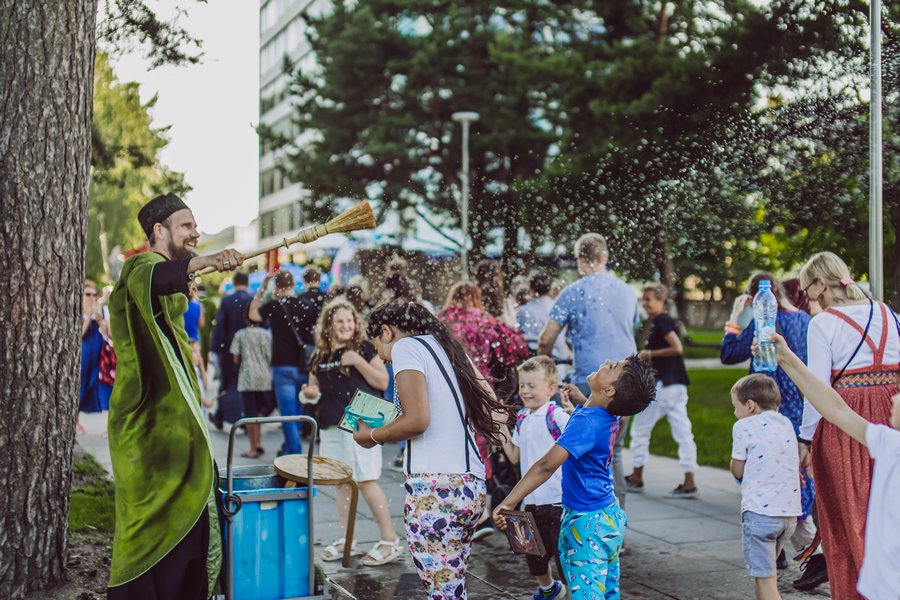† Saint Hyacinth of Vicina, Metropolitan of Wallachia
He was born at the end of the 13th century. He attended the high schools of the time, completing his theological education in Constantinople, where he defended the Orthodox teaching of hesychasm together with Saint Gregory Palamas. Given his worthiness, he was elected metropolitan of Vicina after the death of metropolitan Kiril, in 1358.
Saint Hyacinth was one of the most brilliant metropolitans who completed the series of hierarchs who served at Vicina, Dobrudja, throughout the Christian centuries. In this part of the country inhabited by our Geto-Dacians ancestors, the true faith of Christ, our Saviour, was kept and experienced according to the word of the Gospel preached here by Saint Andrew the Apostle, the first called.
During his pastoral service at Vicina, Saint Hyacinth took good care of his eparchy, of priests, faithful and monastics, but he also faced great trials because of the invasions in these territories of the Tatars and then of the Genoveses. Saint Hyacinth was called several times to Wallachia to bless the Christian faithful in this region.
Metropolitan Hyacinth lived a holy life and he was an example for the Orthodox Christians of the time. He had learned the prayer of the heart from the monks around Saint Gregory Palamas and taught the monks of the monasteries of his eparchy how to reach the state of permanent prayer.
Ruler Prince Basarab I the Founder (about 1310-1352) heard about the holiness of his life, but the existence of church authority in Wallachia recognised by Constantinople is not attested during his reign.
This absence was corrected by the son of the great Founder, Nicolae Alexandru Basarab (1352-1364) who intervened at the Patriarchate of Constantinople to bring Metropolitan Hyacinth of Vicina to the Princely Court of Argeş. In May 1359, as a result of the blessing of Saint Patriarch Kallistos I of Constantinople (1350–1354; 1355–1363) and the insistence of ruler prince Nicolae Alexandru Basarab, Saint Hyacinth moved to the then capital city of Wallachia, Curtea de Argeş.
Thus, in the long series of the metropolitanates of the Patriarchate of Constantinople, the place of Vicina was substituted by the Metropolitanate of Ungro-Wallachia or of Wallachia, which has taken good care of the Orthodox faithful of Dobrudja ever since. Metropolitan Hyacinth was easy to move because Wallachia of Basarab I has stretched up to the Mouth of the Danube, to Chilia, ever since the beginning of the 14th century.
The letter by which Saint Patriarch Kallistos I strengthened the move of Saint Hyacinth to Wallachia shows that “all the clergy of the country and the other monastics and laymen must obey and submit to him as to a true shepherd and father of theirs”, that the hierarch must teach them all “the way of the Gospel, stopping them to do sinful deeds or join dogmas alien to the Church of Christ”, as long as there were some people in Wallachia who were trying to allure the people either to the papal Church, or to the Bogomil heresy.
This is why the patriarch of Constantinople entrusts this wonderful hierarch to the Romanian devoted people, as he knew Hyacinth was a good hierarch and administrator of the Church, as well as great supporter and confessor of the true faith.
Saint Hyacinth strengthened the ruler prince and high officials in Orthodoxy, by word and deed, as they were tempted to change their faith for receiving some worldly benefits promised by foreigners.
The great hierarch has also taken care of the church organisation of Wallachia, ordained worthy priests and put the monastic life in good order, having been loved by the people for his kindness and generosity. Towards the end of his pastoral service, Holy Venerable Nicodemus came to Wallachia, where he set up monasteries with coenobitic life: Vodiţa and Tismana.
During the last years of his life, Saint Hyacinth endured with patience and prayer the burden of much helplessness and many diseases, as well as many unjust slanders because the weakness of his old age hindered him to go to Constantinople. But he has overcome all the trials with humbleness and hope in God, giving good example of spiritually suffering in all troubles.
The first of the metropolitans of Wallachia obeyed Christ all his life and having reached an old age, in 1372, he passed away to the eternal places of God, regretted by all people, as a true father and preacher of the divine truth.
On 9 July 2008, the Romanian Orthodox Church placed him among the saints, being celebrated on 28 October.
Through his holy prayers, Lord Jesus Christ, our God, have mercy on us. Amen.
Troparion, tone 1:
Worthy follower of the hierarchs of Dobrudja and first among the metropolitans of Wallachia, oh, Saint Hierarch Hyacinth, you have proved yourself a confessor of the true faith, cultivator of virtues and intercessor for our souls.
Saint Theophano Basarab
Baptized Teodora, St Theophano Basarab was the daughter of Prince Basarab I, founder of Wallachia, and sister of prince Nicolae Alexandru Basarab, who obtained recognition for the Metropolis of Wallachia.
Through marriage, she became the princess of the Romanian-Bulgarian Kingdom. When things became tense at the court, she discreetly withdrew and embraced the monastic life.
She is the first Romanian-born nun known in history. She was a contemporary of the Holy Hierarch Gregory Palamas and a spiritual follower of Venerable Theodosius the Hesychast.
The Romanian Orthodox Church canonized her on February 17, 2022.
Martyrs Terence and Neonilla and their children: Sarbelus, Photius, Theodulus, Hierax, Nita, Vele and Eunice
They suffered martyrdom during the persecution of Christianity under the emperor Decius (249-250).
They zealously confessed Christ and denounced idolatry. For this the pagans subjected the entire Christian family to terrible tortures and torments, but failed to get them to renounce the true Faith. So, the holy martyrs were beheaded, and received crowns of martyrdom.
Troparion tone 1
Bound together by natural bonds and clothed with the might of faith, you walked the path of martyrdom with your seven children. O holy Martyrs Terence and Neonilla, pray that those who honor your contest may receive forgiveness of their sins.
Holy Hierarch Phirmilianus, Bishop of Caesarea in Cappadocia
The Holy Hierarch Phirmilianus was the bishop of Caesarea in Cappadocia from 230 A.D.
He was involved in the theological disputes of his time. He condemned Novatianus’ schism and the position of the Pope of Rome, who accepted the baptism of the heretics as valid. He presided over the Synod of Antioch, against the heresy of Paul of Samosata.
Only one epistle, written in 256 to St Cyprian of Carthage, survived. The Holy Hierarch reposed in the Lord in 268.
